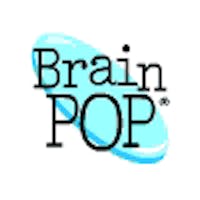“Differentiation can take hours and hours and hours, but I’ve found a super-efficient way to differentiate well,” enthuses Dorseyville Middle School teacher Cathie Gillner.
So what’s her secret, and how can you replicate it? It’s BrainPOP.
Originally popular with educators for its ability to explain tough topics through engaging movies and quizzes, the well-known resource has amped up its offering since launching 20 years ago. Now Gillner says new coding, concept mapping and video-creation tools make it easy for her to differentiate learning—something she’s been doing for the last five years.
Here, Gillner shares how easy access to differentiation tools saves time, empowers her students to learn concepts more deeply and helps learning stick.
EdSurge: What does differentiation look like in your classroom?
Cathie Gillner: Say I’m teaching a digital citizenship concept. There is an assignment builder, almost like a menu board, where I can specifically outline the pathway I think a student should follow in BrainPOP. I give each student five or six resources and activities. They could be games, readings, a coding project, a concept map they need to create—there are tons to choose from.
Everything is tailored to where students are in their learning, and that makes my students feel very, very special. And concepts are sticking because these tools give students the ability to create in a way that’s meaningful to them. And as a teacher, it was only five clicks to get that done, so it was an efficient way to differentiate.
Now that I'm differentiating, I'm getting much better results in the final projects students turn in because the resources we use better match their needs. They can brainstorm their projects with a distinct focus and then move into a project more fluidly. They spend less time completing projects and receive higher grades because their projects are clearly more focused.
How does your approach to differentiation make knowledge sticky for students?
It’s the creation. We could just watch a video and talk about it, but when you add a creation piece that is fun and engaging, that's when concepts stick with kids. Students slow down, think about a concept and demonstrate what they’re learning when they create a concept map, or make a movie, or code to create a game. So, they retain it.
Can you share a specific example?
We worked on a project about digital citizenship, and we asked: ‘Are you the same persona online as you are offline?’ I asked some of my students to use the coding tool to create a video game related to self image and identity. They developed a game where a character was an angel at school but posted heinous things online. But in testing, other students couldn’t grasp the concept of the game.
They brainstormed and discovered they needed to introduce the concept of self-image and identity first. They decided to create a movie.
With that information, the game made way more sense for students. So it wasn’t just about making something work, but making something factual and correct and communicating a concept.
What kind of impact is differentiating with this tool having on your students?
It’s twofold. First, they’re understanding how and when to use technology to meet their own learning needs. If they have the opportunity for a project in another class, they're opening up the concept mapping tool, or they're telling their teachers, ‘There's a game on BrainPOP we can play that's related to this topic.’
And, they’re grasping concepts better. There’s a study that shows students in schools with a BrainPOP subscription had a greater increase in standardized test scores than those in non-subscribing schools. And while we haven’t measured that, I can see an increase in understanding in my students.
When I went to school, watching a movie was a really big deal. Now, media is something that kids expect as they're learning. It's definitely part of the learning, but after you watch that video and or have that formative assessment, what can we do with that? How can we be creative afterwards? BrainPOP helps us get to that next level of learning with media.



